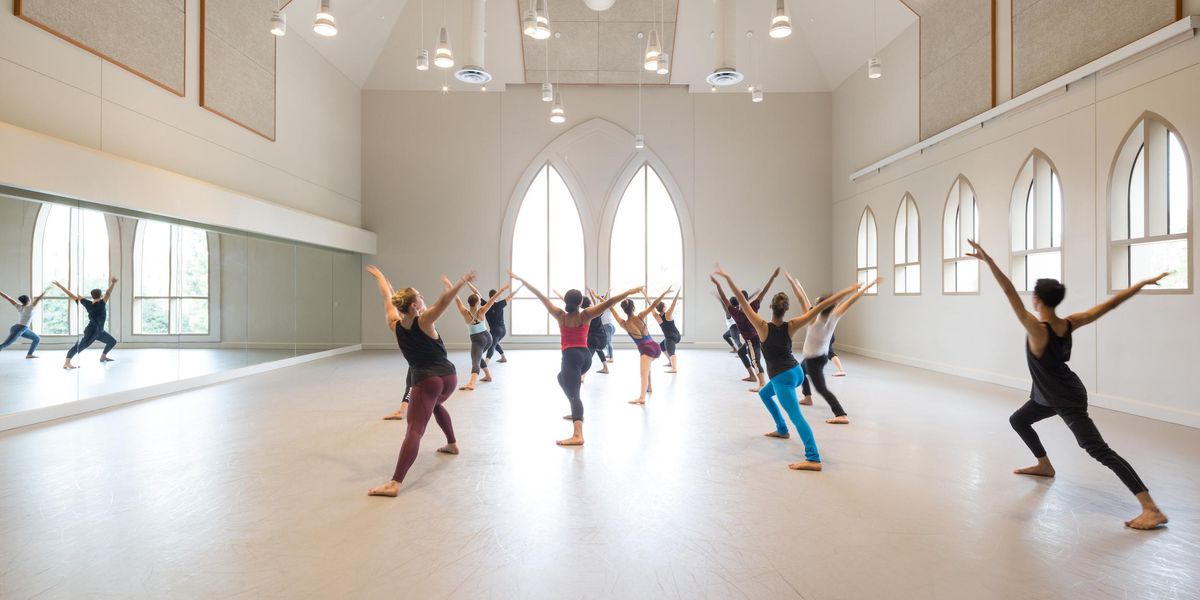Out of Whack?
In a typical advanced ballet class, a dancer performs around 200 jumps. Each one requires the leg and core muscles to launch her into space and the ankle, knee and hip joints to absorb the impact when she comes back down. Within just 90 minutes, the body is put through the same kinds of stress in the exact same places again and again.
Day after day, week after week, the specific, repetitive demands of dance can cause extreme muscular imbalances, particularly in the lower body. Some muscles end up overworked while others are underutilized. Not only does this put you at risk for injury (Harkness Center for Dance Injuries reports that overuse causes 65 percent of injuries in dance), but it can lead to a variety of compensations that keep you from moving efficiently. Areas of tightness might pull you out of alignment, while groups of weak muscles can turn into poor partners just when you need their stability the most.
Corrective exercises can help build a more balanced body by strengthening weak muscles and stretching overactive ones. Amy Schulster, a dancer/aerialist and corrective exercise specialist who owns AIM Fitness NYC, recommends these four exercises to warm up underactive muscles and correct some of the most common imbalances endemic among dancers. With regular practice, they can help improve your body’s stability, alignment and control.
For Turnout: Clams
Many dancers try to eke out the final inches of turnout by gripping their quads and hip flexors. This exercise helps strengthen the muscles that should be engaged instead: the deep external rotators and the gluteus medius. Working those muscles will help you be able to hold turned-out positions with more stability and better alignment.
1. Lie on your side, knees bent and stacked, and align your head, tailbone and feet against a wall.
2. Open your top knee to the ceiling, keeping the feet connected. Close it with control.
3. Work slowly through 10–15 repetitions on each side. Do two sets.
TIP: The range of motion will be small. Concentrate on keeping the alignment of your torso and hips stacked while the thigh bone rotates inside the hip socket. If you want to increase the difficulty, tie a Thera-Band around your thighs (right above the knees).
For Développé: Posterior Leg Lifts
High développés and battements can make the hip flexors become shortened and overactive, especially when the transversus abdominis, your deepest layer of abdominal muscle, is not engaged and strong. The quadriceps become shortened while the hamstrings are often overstretched. This exercise strengthens the glutes and engages the hamstrings while using the transversus abdominis to stay in a neutral position.
1. Lie on your stomach with your hands underneath your forehead and your legs in parallel, hip-width apart.
2. Exhale and scoop your navel up towards your spine.
3. Maintain that space under your abdomen, and keep your hips connected to the ground as you lengthen and lift one leg a couple of inches off the ground.
4. Aim for 20 reps, then switch sides. Do two sets.
TIP: Less is more! The major thing to avoid is an arched lower back. Schulster recommends picturing your leg bone moving in a tiny range of motion in the joint and engaging the muscles closest to the bone.
For Relevés and Jumps: Single Leg Balance
While pushing the floor away into a demi-pointe rise or jump, dancers tend to rely on their quads and calves. This exercise works the standing leg’s underactive glutes as well as the underused medial muscles of the lower leg (which connect the ankle to the foot and help hold up your arch). Strengthening these areas will ultimately increase stability, leading to smoother pirouettes, longer balances, more control in your landings and higher jumps.
1. Stand in parallel, feet hip-distance apart.
2. Lift one knee up to 90 degrees, and raise your arms straight overhead.
3. Either hold for one minute, then switch legs, or extend the working leg forward 12 to 15 times.
4. Repeat for a total of two sets.
TIP: Keep the leg up without gripping at the hip flexor by engaging your abdominals. Schulster advises: “If you have pain in the hip flexors, modify this by keeping the working leg close to the ground, just hovering off the floor.”
For Tendu: Thera-Band Dorsiflexes
Every tendu you perform stretches the top muscles of the foot and ankle, and the constant pointing can leave them weak. This exercise helps strengthen the area to provide stability when landing jumps and coming down from relevé.
1. Sitting on the floor, wrap a Thera-Band around something stable in front of you (like the leg of a table or ballet barre) and tie in a loop.
2. Put one foot inside the loop, over the top of your foot with your toes free. Sit far enough away to feel resistance from the band.
3. Flex the foot up toward the ceiling (try to relax your toes) and into the resistance of the Thera-Band.
4. Repeat 10 times, then switch sides. Do two sets.
TIP: Perform this at a slow tempo with control, hold at the top, and keep the slow tempo on the way down.
How Functionally Fit Are You?
• Can you do 25 calf raises, standing on one leg, in parallel?
• Can you lie on your back and lower both legs, from straight up (90 degrees) all the way to the floor, while maintaining a neutral pelvis?
• Can you balance on one leg in parallel, eyes closed, for one minute?
These are just a few of the tests that the Harkness Center for Dance Injuries gives when they screen dancers for injury risk. If you’re in the New York City area, you can get a free assessment by calling 212-598-6054.
Candice Thompson, a certified Pilates trainer, writes for
Dance Magazine, Dance Teacher and Pointe. All photos by Jayme Thornton; modeled by Abbey Kowalec of Marymount Manhattan College.




